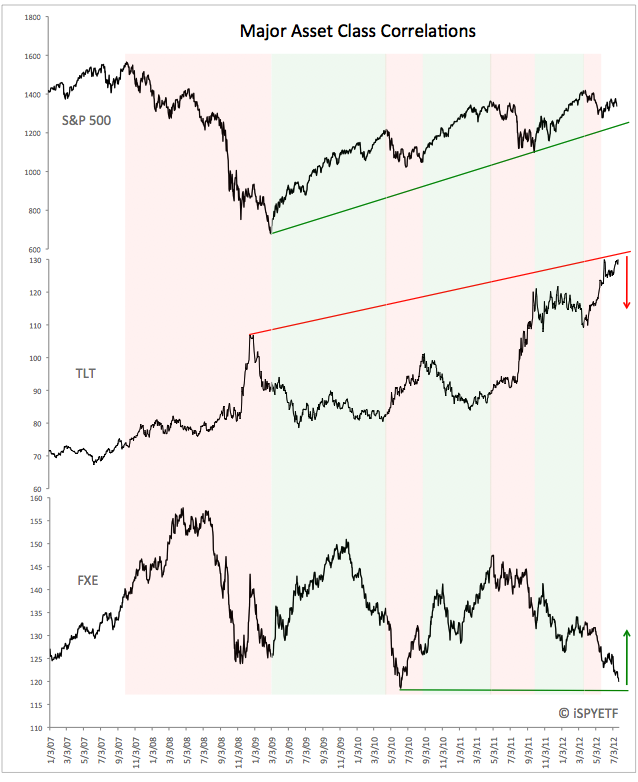There’s a Bavarian saying that encourages people to “look beyond the edge of their own plate.” Translated in investment terms this means to expand your horizon and look at more than just one asset class.
Several times over the last couple of months the S&P 500 (SPY) has been declared “dead”. In fact, a recent CNBC headline said that: “Bill Gross is latest to join ‘stocks are dead’ club.”
The Fed could have jolted the S&P back to life with a dose of QE3, but decided not to. Against all odds, rather than rolling over, stocks have sprung back to life – a case of “dead man walking.”
On July 25, with the S&P trading as low as 1,331, a special Profit Radar Report outlined why stocks are not ready to decline just yet.
The key to this bold forecast was found in the correlation between various asset classes. Below are excerpts from the special July 25 Profit Radar Report.
July 25, Special Report: Asset Class Correlations
Some asset classes boom while others bust and vice versa. For example, bond prices typically rise when stock prices fall. Those types of asset class correlations should be taken into consideration for any market forecast.
Individual outlook for long-term Treasuries: Long-term T's are butting up against long-term resistance while relative strength (RSI) is lacking price. This suggests that long-term Treasuries are in the process of topping out. Falling Treasury prices typically means rising stock prices.
Individual outlook for the euro: The euro has been trending down since March 2008 and is currently trading just above the June 2010 low. Although euro prices dropped below the June 1, 2012 low, RSI is solidly above the June 1 low. This suggests that the euro is trying to find a bottom that lasts for more than just a few days. Any bounce could gather steam if the euro is able to move above resistance. A strengthening euro is usually good for stocks.
What this means for stocks: If the euro rallies and long-term Treasuries decline, stocks should move higher or at least have a hard time declining.
The chart below shows how the iShares Barclays 20+ Treasury Bond ETF (TLT) and Currency Euro Trust (FXE) perform during times when the S&P is in an extended up or down trend.
With Treasuries near a top and the euro near a bottom, stocks should rally or at the very least have a hard time declining.

|